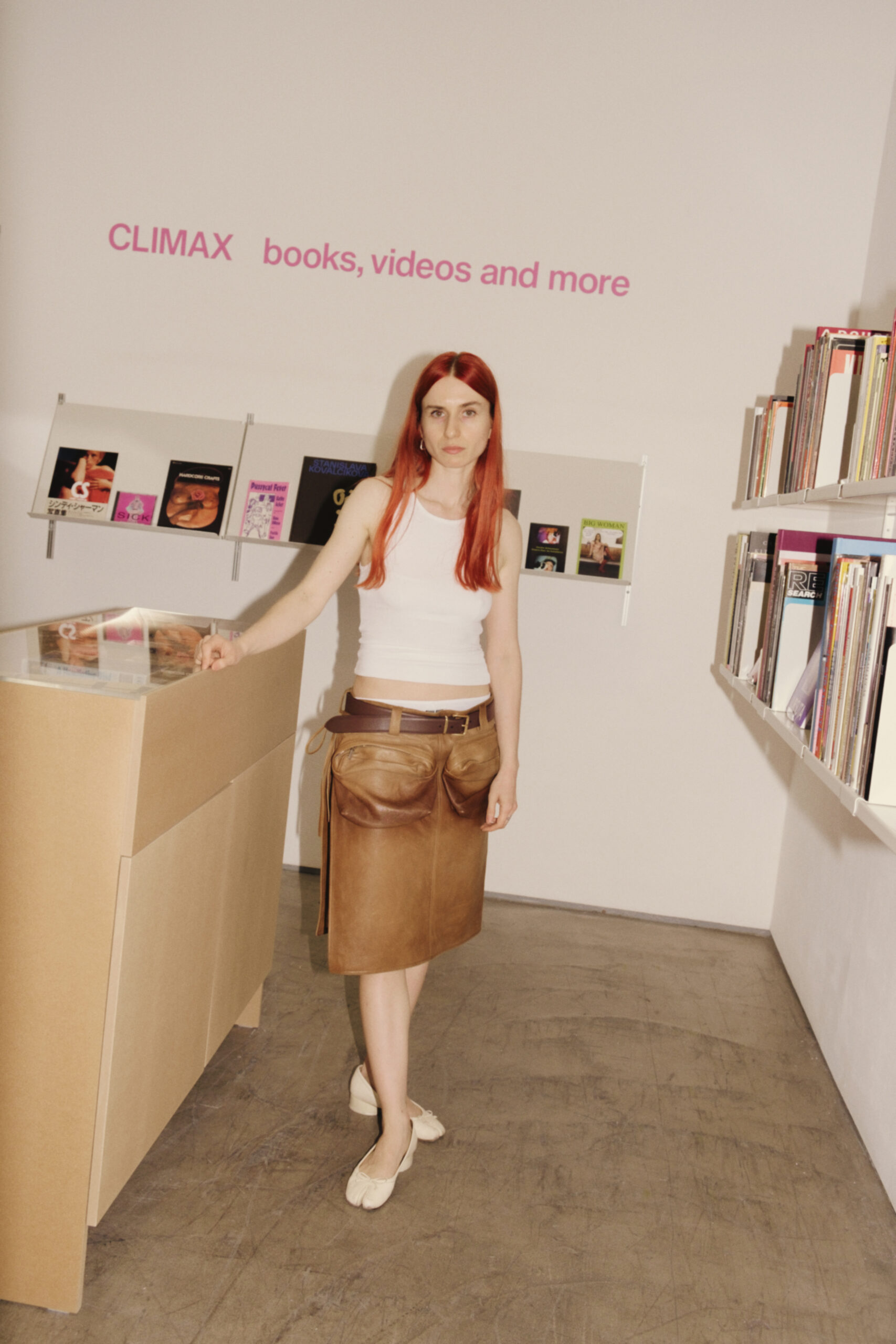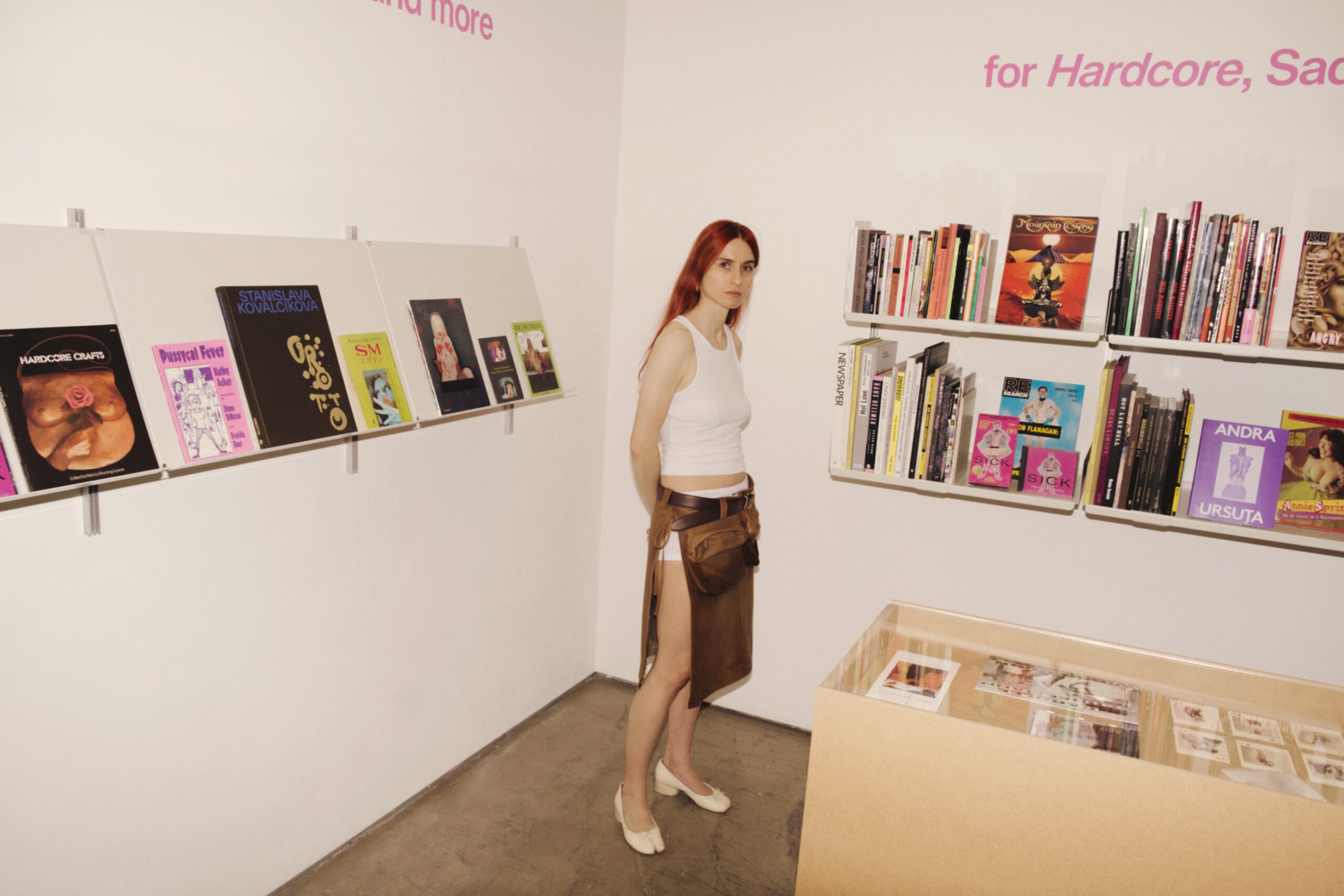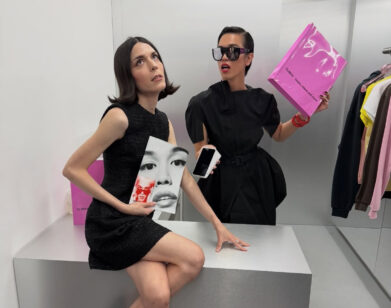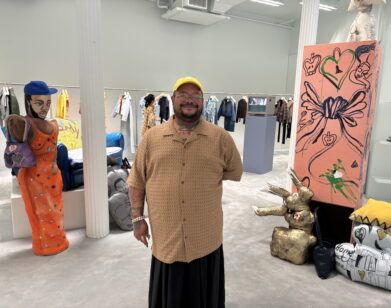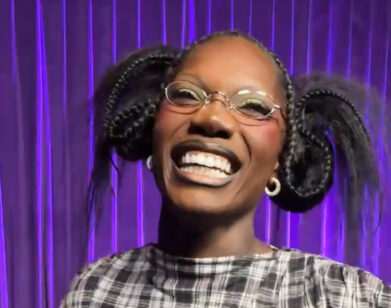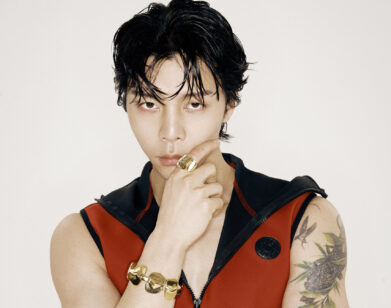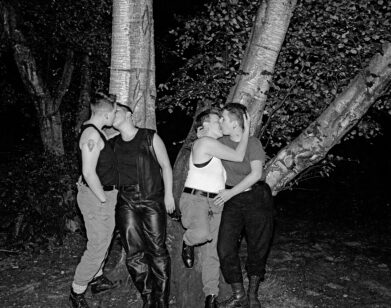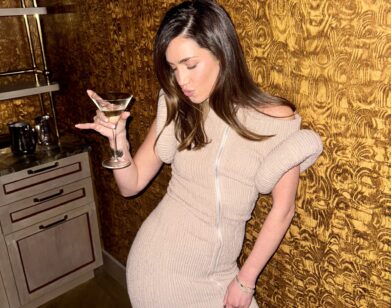HUSTLE
How Fashion Exec Isabella Burley Conquered the World of Rare Bookdealing
Isabella Burley was a London club kid whose style and insatiable curiosity won her the enviable gig as fashion editor of Dazed in 2013, then editor-in-chief in 2015, the perch at which she remained until 2021. It didn’t take long for esteemed fashion brands to come calling. Helmut Lang first hired her as editor-in-residence at their New York base before Burley was named Chief Marketing Officer of Acne Studios. Her jet-setting schedule takes her between London, New York and Tokyo, but “if you’re excited about something,” she explains, “it doesn’t feel like work.” When she and I spoke earlier this month, she told me that the next big move is to open a brick-and-mortar in New York for Climax Books, the rare book dealership Burley opened in 2020 in London that sells everything from DVDs to vintage editions to various cultural ephemera. “We have so many friends and collaborators in New York and playing with that space in a bigger way is so exciting,” she told me. Ahead of the expansion of Climax, Burley got on Zoom to talk about growing up in the London club scene of the 2000s, collaborating with fellow creatives to create something immersive and inclusive, and the subversive genius of Kathy Acker.
———
ISABELLA BURLEY: Where are you?
CAT WOODS: I’m in Melbourne. What about you?
BURLEY: Nice. I’m in London. We’re going to Paris on Sunday, and we have the Acne show next Wednesday.
WOODS: I’m glad I caught you at this moment then. Running Climax Books is just one of your many roles. Do you inevitably combine your work and leisure so that there’s not really boundaries?
BURLEY: Yeah, it’s almost a necessity. I was in the office until midnight last night working through some merch ideas for Climax, so it’s inevitable. If you’re excited about something, it feeds into your time and your life. We’ve built a community of great people so it doesn’t feel like work or something structured. It’s just something that’s always in my mind.
WOODS: From what I’ve read, the name of your shop was inspired by a vintage ‘80s fashion brand called Climax?
BURLEY: It was less about being inspired by the brand itself. I remember seeing the garment label, and the logo is these crazy big lips—it’s quite a surrealist logo, really playful. I remember just being so drawn to that expression but also to the name Climax. It’s evolved into our curation having that playfulness and excitement around books, with Climax as a language that frames the point of view we have. It’s a really fun umbrella for what we do, beyond visual identity and branding. This year we really want to build upon that.
WOODS: I think that trip where you saw that logo was a number of years before you actually opened the shop. What was the process like?
BURLEY: Yes, it was May 2006. I found a screengrab the other day of when I first saw the garment label and knew that this project, whatever form it would take, would be called Climax. Before then, I’d always had an interest in collecting ephemera and photo books and old erotica, but I didn’t know what to do with it. It was just like, “Is it a mad hobby or is there some project in this?” I started building up a collection and sourcing in a more intentional way, but I was still working at Dazed as editor-in-chief at that time and we were just so busy with relaunching the magazine. And then I was approached by Helmut Lang to become their first editor-in-residence, which was a huge consultancy. I would spend two weeks in New York, one week in London, just back and forth craziness. And I brought on Shayne Oliver from Hood By Air to work on a guest collection, so Climax just got put on the side a little bit. In 2020 during COVID, everyone had more time and more head space and some issues of Dazed were on hold because we couldn’t shoot content. It was really the first time in 10 years where I had nothing to work on, which is quite an eerie feeling if you’re used to being so busy. Then I started working with a friend of mine, Christopher Lawson, on the visual identity of Climax. He did such an amazing job at translating the references in my head that I’d been carrying around for years. As soon as I saw his first proposal, which was the pink Climax—
WOODS: Yeah, it’s gorgeous.
BURLEY: I was just like, “That’s it.” I wanted an element of luxury, and [Lawson] comes from a very art world point of view when it comes to graphic design and art direction that elevated it and executed it in a very chic way.
WOODS: Absolutely. Tell me about being a teenager in London and what experiences were really formative for you.
BURLEY: Growing up in London at the time I did was so fun. I was dating someone slightly older, and I also had an ambition to start working and discovering things really early. At 15 or 16, I was working at American Apparel and I was still in school, but there was an amazing club night in Hoxton Square called BoomBox, which is outrageous now, but was the spot to be on a Sunday night. So I would literally work during the day at American Apparel and then get dressed up with a friend, go to BoomBox, and get the night bus home and go straight to school the next day. It was like that. I also started working at Dover Street Market when I was 17 and it completely blew my mind. We’d have the most interesting customers come in who were working creatively in such an impressive way and were so uncompromising in their vision that really shaped my way of thinking. But there was also a community within the people I was working with at Dover Street, who were maybe also working at magazines or starting their own brand. There was an ability to learn different things from all of these amazing mentors because I was the youngest one there at that time.
WOODS: I love that. Can you tell me about the physical shop and why that part of London appealed to you?
BURLEY: At the start of last year, we were approached by Sadie Coles Gallery, which to me is one of the best galleries in London. Sadie is a woman I have so much respect for. We were invited to take over their ground floor of the Kingly Street gallery to coincide with an exhibition that they had called Hardcore. The invitation to have a physical space in central London felt so exciting. I was also moving houses around that time, so it felt like the moment to step up and have a physical space and a proper office because it was more of a bedroom project back then. So we found this space in Soho in London, an old muse building. It is very classic London—slightly falling apart, wobbly building, but it’s right in the heart of Soho down a tiny new street off Wardour Street, which is the main street of Soho. It really feels like a hidden gem. It has this if-you-know feeling, but we have these really big pink Climax signs out front so people can find us. I think the next move, hopefully at the end of this year, will be a physical storefront in New York that is much more street-level and public-facing. In London, we wanted it to feel a bit more intimate.
WOODS: Tell me about the New York shop.
BURLEY: There’s a space in the East Village. My boyfriend is a publisher and he is moving to a bigger space so I’m going to take over the lease from him at the end of this year. New York was the place where I discovered my love of books and bookstores and it feels like a second home, so opening up there in a bigger way makes so much sense for us. We have so many friends and collaborators in New York and playing with that space in a bigger way is so exciting.
WOODS: What do you have in the shop right now that you’re really excited for people to discover?
BURLEY: Oh my god. We have a big delivery coming in soon. We’re focusing on getting newer imprints, so we have a book called Cyberfeminism Index by Mindy Seu, which is really incredible. That just came in. I’m also into finding objects that are really interesting. We have this Hiromix—it’s bit like a photozine and CD-ROM set, if you can see it.
WOODS: Oh, wow.
BURLEY: It has all of these amazing images. This is from 1994. We’re looking at the different formats of image making from the past. Her work is so much about owning her self-expression. Sofia Coppola did one as well. They’re really hard to come by and they’re also crazy as a design object.
WOODS: Yeah, it’s genius. Do you ever end up falling for rare items and buying them yourself?
BURLEY: I’ve gotten really good at having boundaries. I’m also in the middle of a huge house renovation so I don’t have any of my personal books at home. There’ll often be things where I’m like, “Oh my god, do I want to sell this or keep it for myself?” But I also believe if a book is meant to be in your life, it will come back around and you’ll find it again for yourself. I genuinely find such joy in customers coming in and finding a book and that is, in a way, more powerful than holding onto stuff yourself.
WOODS: How do you source videos, books, and magazines? Do publishers or artists or collectors come to you or do you do the hunting?
BURLEY: Mostly I do the hunting because I have such a specific taste. I’m lucky enough to travel a lot and I find amazing things when I’m in Tokyo and do quite serious book buying trips or when I’m in New York or L.A. or Miami. Anytime I’m in a new city, I will try and hunt down good things. But there’s a lot of stuff online, and we grew up in a generation of going down deep, deep rabbit holes, which people often do with clothes now. For me, I do that with books.
WOODS: Have any of your customers come in with a very personal or emotional reason for why they want a particular item?
BURLEY: We haven’t had any crazy stories but people are always like, “I’ve always wanted this,” or, “I’ve never seen this in person before,” which is really nice. Sometimes people save up for months to get something that they’ve wanted for ages, and it’s so sweet when you really can tell that they’re going to treasure something forever. Other times it’s nice when photographers or art directors are drawn to something that might be a thread of inspiration for the future.
WOODS: I have to ask, there’s a bunch of Kathy Acker books and a CD as well. What attracts you to her work?
BURLEY: I think what’s so interesting about her, as with a lot of cultural figures around that time, is that their presence is what you first notice. It was her look, her attitude, her fearlessness that stood out to me at first. And then I discovered her work and her life. There’s been a lot of amazing biographies written about her life. I’m drawn to people that live their life in a very fearless but also totally insane way that is almost more unrelatable now to how we live our lives. It’s just really fascinating to hear all of those absolutely insane stories. Yes, she was a writer, but she was also a cultural figure who understood the power of different forms of communication. She also spent a lot of time in London and the way she wore clothes was amazing. It’s about someone being more than their work, but their work being them, if that makes any sense.
WOODS: Yeah. I was pretty young, 13 or 14, when I read Pussy, King of the Pirates, and I really had no idea what it was. I likely picked it up because of the title, but it was mind-blowing. I was reading it going, “Am I actually reading what I think I’m reading?” She just has that effect.
BURLEY: And once you know more about her as a person and how she operated in these different cultural scenes, it adds another level of weight to it, which I love.
WOODS: Absolutely. I loved Colette in Paris and I’m still dying to go to 10 Corso Como. Colette had this really great balance of brand and media, but it also had its own brand. I’ve still got a Colette compilation CD. Is a compilation something that you are looking at branching into with Climax?
BURLEY: 100 percent. That’s really what we’re trying to focus on this year, transitioning Climax into a brand and not just a bookstore. At its heart, Climax is a bookstore and everything we do will be about the discovery of rare, one-of-a-kind forgotten items. But we want to push further into publishing and work on projects beyond just books and ephemera. Having a physical store space in New York allows you to experiment a lot more. I don’t know about you, but I really crave physically being able to interact with things. That’s such a special aspect of books—how they smell, how they feel, the paper.

